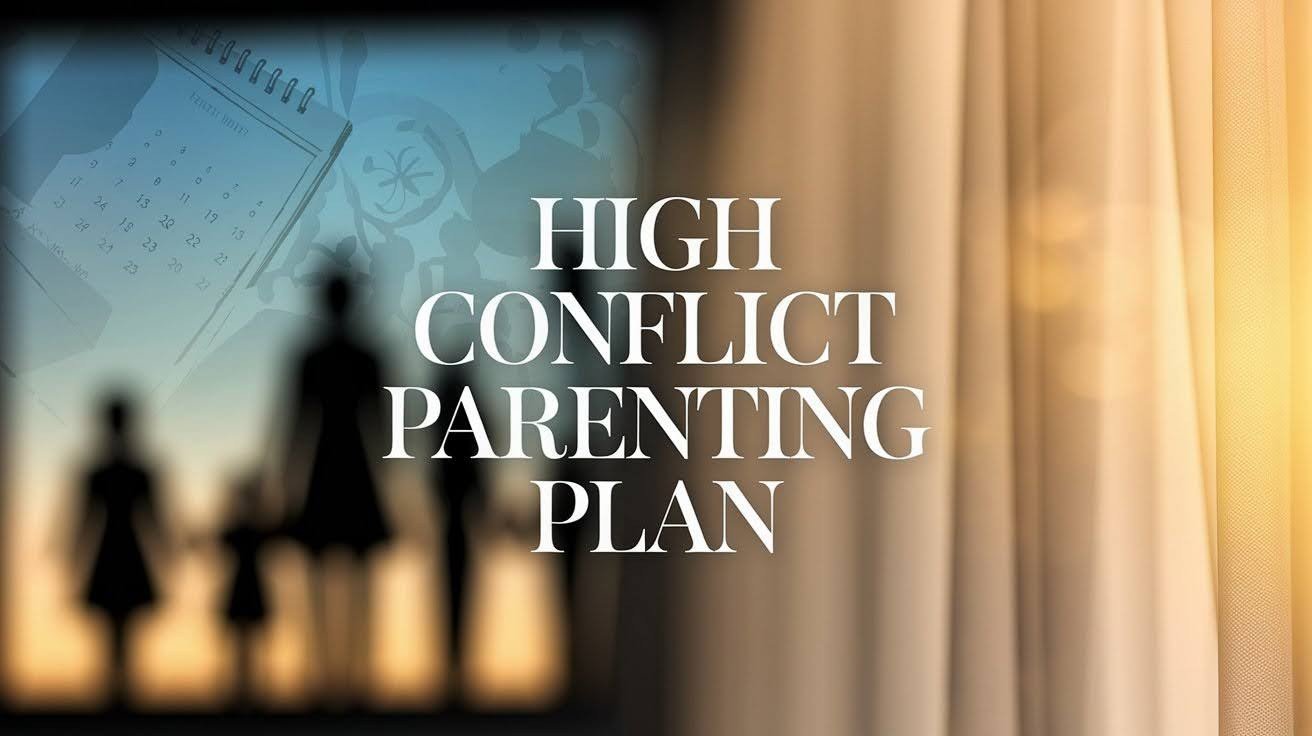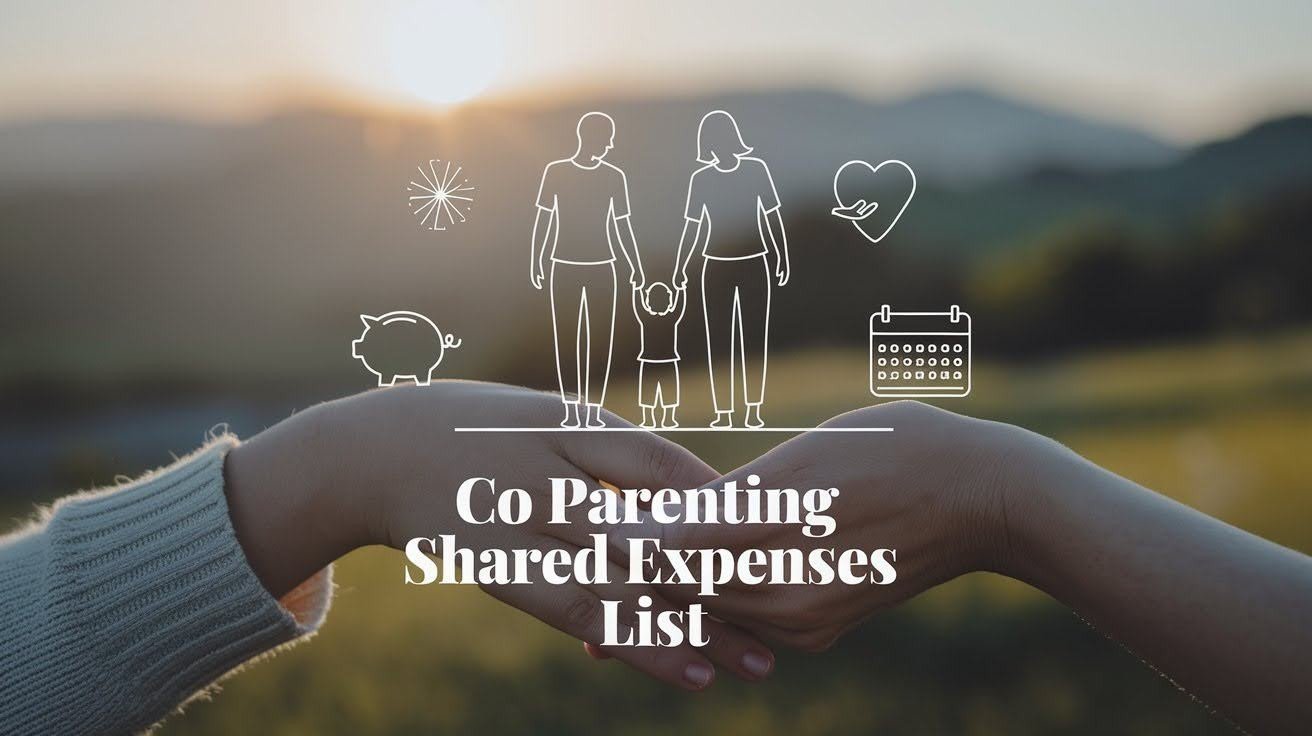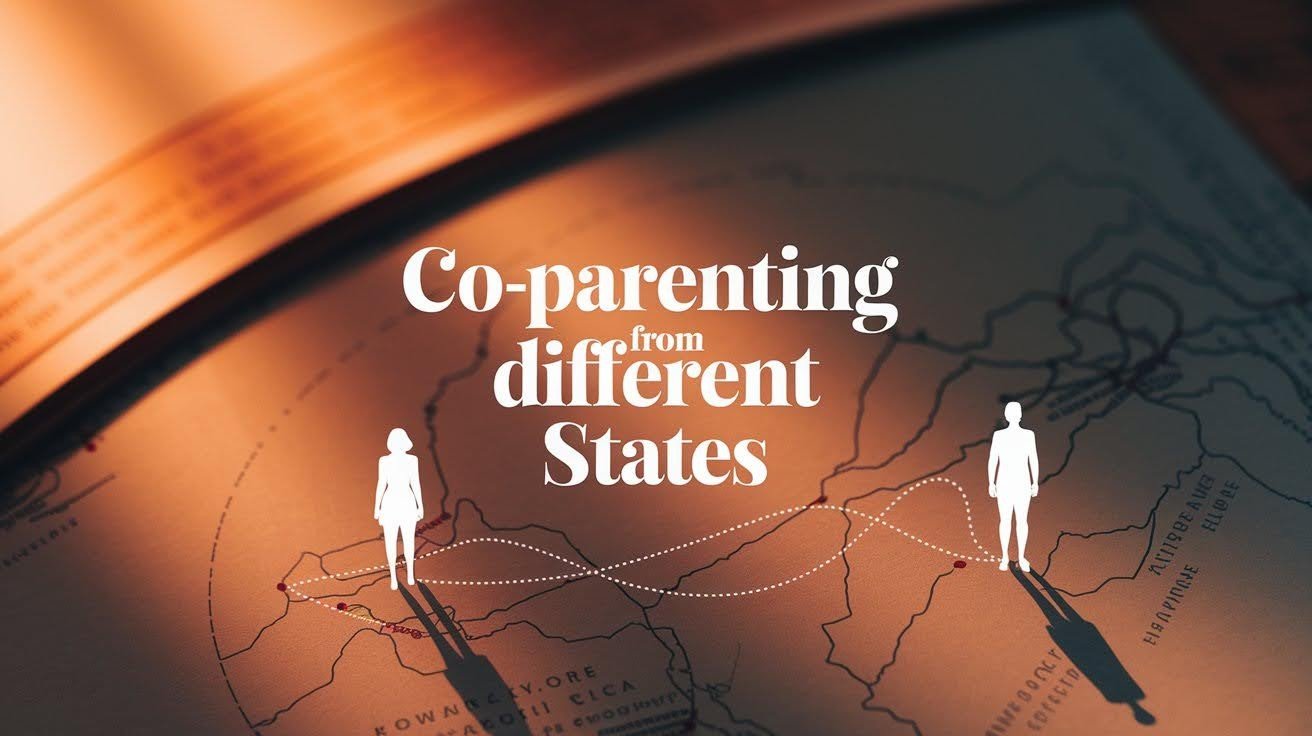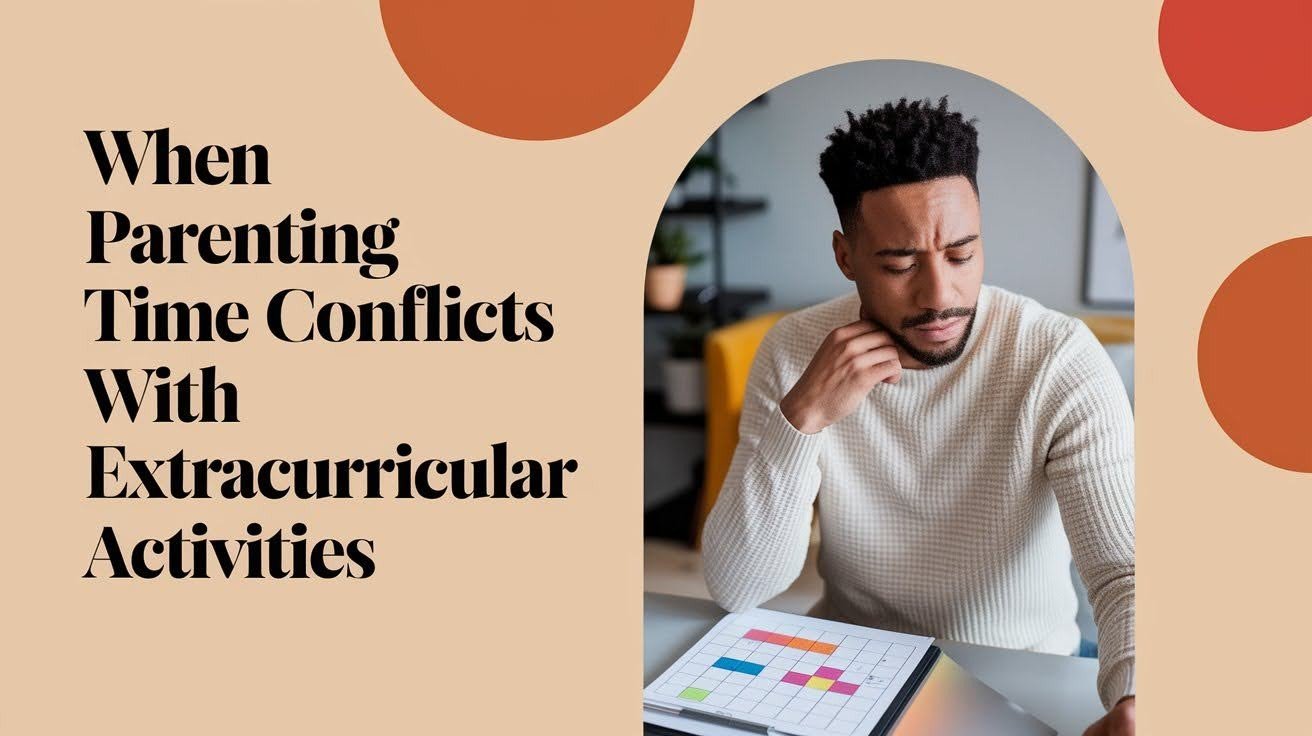When a marriage ends, you probably never expected that something as simple as deciding who pick up the childs for the soccer practice that could become a points of tension.Yes this is a reality many divorced or seperated parents.
If you’re reading, maybe this, one the same page when it comes. every text about schedule changes turns into an argument. Perhaps drop-offs feel like tense negotiations. Or worse, maybe your kids are starting to notice the tension and asking questions you’re not sure how to answer.
A high-conflict parenting plan isn’t just another legal document to file away it’s your roadmap out of the chaos. Think of it as creating guardrails for your family’s new normal.
What Is a Parenting Plan and Why Does It Matter?

A parenting plan is a roadmap that outlines how you and your co-parent will raise your child. It covers schedules, responsibilities, and important decisions, helping both of you stay organized and consistent for your child’s well-being.
Having a plan can reduce misunderstandings and conflicts. When you know who handles what and when, it brings peace of mind and allows you to focus on quality time with your child instead of worrying about logistics.
Creating a parenting plan is also about showing your child stability and security. By planning together thoughtfully, you demonstrate that their needs come first, which helps them feel safe, valued, and loved.
Understanding Child Custody
Child custody determines who makes important decisions for your child and how much time they spend with each parent. Understanding it helps you protect your child’s best interests while maintaining a healthy co-parenting relationship.
Custody can be legal (decision-making power) or physical (where the child lives). Knowing the difference gives clarity and helps reduce confusion or conflict between parents.
Being informed about custody also allows you to plan thoughtfully, create a stable routine, and ensure your child feels secure, supported, and loved regardless of the arrangements.
Legal and Physical Custody: What’s the Difference?
| Aspect | Legal Custody | Physical Custody |
| Definition | Authority to make major decisions about your child’s life, like education, healthcare, and religion. | Determines where your child lives and how much time they spend with each parent. |
| Decision-Making Power | Shared or sole decision-making about long-term issues. | Limited to day-to-day living arrangements and routines. |
| Focus | Big-picture decisions affecting the child’s overall life. | Daily care, supervision, and immediate needs of the child. |
| Flexibility | Can be shared even if physical custody is unequal. | Usually involves schedules, visitation, and living arrangements. |
| Goal | Ensures both parents have a say in important matters. | Provides stability and consistency in the child’s daily life. |
Six reasons to use Custody X Change
Custody X Change is a tool designed to simplify custody planning and make co-parenting smoother. Here are six reasons why it can help you manage parenting arrangements more effectively:
1. Organize your evidence
When preparing for a custody case or parenting discussion, the first step is to organize your evidence. Collect documents, messages, school records, and any other proof that shows your involvement and care for your child.
Keeping everything in order makes it easier to present your case clearly. It reduces stress and helps you feel confident, knowing you have concrete examples of your parenting efforts.
Organizing evidence isn’t just about winning it’s about showing your child’s best interests come first. By staying prepared, you demonstrate responsibility, consistency, and dedication to their well-being.
2. Co-parent civilly
Learning to co-parent civilly is essential for your child’s happiness. Even if you and your co-parent don’t always agree, treating each other with respect shows your child that their well-being is the priority.
Maintaining calm communication helps prevent arguments from escalating and reduces stress for both you and your child. It also models healthy conflict resolution and emotional regulation.
Civil co-parenting isn’t always easy, but it creates a stable, loving environment. By focusing on cooperation rather than conflict, you help your child feel secure, supported, and loved by both parents.
3. Get accurate calculations
When it comes to custody or support arrangements, it’s important to get accurate calculations. Knowing the exact figures for child support, visitation schedules, or expenses prevents misunderstandings and ensures fairness for both parents.
Accurate calculations give you peace of mind. You can plan your budget, schedule, and responsibilities confidently without surprises, helping reduce stress and conflict.
Being precise also shows your commitment to your child’s well-being. It ensures their needs are met consistently and fairly, while demonstrating responsibility and reliability as a parent.
4. Succeed by negotiating
Learning to succeed by negotiating is key to creating custody and parenting arrangements that truly work for your child. Approach discussions with flexibility and a focus on solutions rather than conflict.
Effective negotiation allows both parents to share input, find common ground, and make decisions that balance everyone’s needs, especially your child’s emotional and practical well-being.
By negotiating thoughtfully, you model cooperation and problem-solving for your child. It also helps reduce stress, build trust between parents, and create a stable, supportive environment where your child can thrive.
5. Never miss an event
One of the simplest yet most meaningful ways to support your child is to never miss an important event. Attending school performances, sports games, or parent-teacher meetings shows your child they are valued and loved.
Being present consistently helps build trust and strengthen your bond, even if co-parenting challenges exist. Your involvement reassures your child that they matter to you, no matter the circumstances.
Making the effort to attend also sets a positive example. It teaches your child the importance of commitment, responsibility, and showing up for the people you care about most.
6. Save on legal fees
One way to reduce stress during custody arrangements is to save on legal fees whenever possible. Being organized, prepared, and informed can significantly cut down on time spent in court or in consultations.
Using tools like organized evidence, clear communication, and mediation can reduce the need for lengthy legal battles. This not only saves money but also keeps the focus on your child rather than on conflict.
Saving on legal fees allows you to invest more in your child’s well-being. Every dollar and moment saved can go toward creating a stable, supportive, and nurturing environment for your child.
Special Circumstances and Protection Measures
In high-conflict parenting situations, standard co-parenting rules may not be sufficient to protect children’s safety and emotional well-being:
- Implement High-Conflict Specific Provisions: When conflicts are extreme, consider extra measures to protect children. Parallel parenting allows parents to operate separately, minimizing exposure to ongoing disputes and providing a calmer environment for kids.
- Use Limited Communication Protocols: Restrict communication to essential topics like schedules, emergencies, or health updates. This reduces unnecessary arguments while ensuring children’s needs are addressed efficiently and respectfully.
- Establish Separate Parenting Time Structures: Some families benefit from fully separated parenting times instead of trying to coordinate activities or share events. Clear boundaries help prevent conflict and provide children with consistent routines in each parent’s care.
- Consider Family Violence Safeguards: If there is a history or risk of family violence, integrate safety measures into the plan. These provisions help protect children and maintain a secure environment during transitions.
- Follow Supervised Visitation Criteria: Supervised visits are essential when safety concerns exist. They allow children to maintain relationships with both parents while ensuring protection and oversight during challenging circumstances.
Conclusion
A successful high-conflict parenting plan requires commitment, patience, and focus on what’s best for the children involved. When parents follow clear rules and procedures consistently, families can move forward with greater stability and less ongoing conflict.
The key to success lies in creating detailed, specific plans that leave little room for interpretation or disagreement. Regular communication through structured channels, consistent enforcement of agreed-upon rules, and professional support when needed help families implement their plans effectively.
Children benefit most when their parents can set aside personal conflicts to focus on providing stable, loving relationships. While high-conflict situations are challenging, well-designed parenting plans help protect children while allowing both parents to maintain meaningful relationships with their kids over time.
Frequently Asked Questions
How long does it take to create a high-conflict parenting plan?
Typically, creating a high-conflict parenting plan takes 2-6 months, depending on your family’s unique circumstances, the level of cooperation between parents, and whether mediation or legal guidance is needed to ensure a structured, fair, and enforceable plan.
Can a high-conflict parenting plan be modified later?
Yes, your plan can be modified if significant changes occur, such as relocation or new circumstances. Modifications require court approval, focusing on the children’s best interests rather than convenience, ensuring stability, safety, and ongoing alignment with their developmental needs.
What happens if one parent violates the high-conflict parenting plan?
Violations should be documented carefully. Initial attempts often involve mediation or parenting coordinators. Persistent or serious breaches may lead to court involvement, which can include adjusted custody, makeup time, or legal consequences, always prioritizing children’s stability and emotional well-being.
Do children have input in creating a high-conflict parenting plan?
Children’s voices matter, especially older ones, and their preferences and developmental needs are considered. While parents make final decisions, incorporating children’s reasonable input ensures the plan supports their emotional health and aligns with what truly serves their best interests.
How much does implementing a high-conflict parenting plan cost?
Costs vary depending on legal fees, mediation, parenting coordinators, and counseling support. Simple plans may cost $2,000-$5,000, while complex cases requiring extensive professional support can reach $10,000 or more annually, depending on your family’s specific needs and circumstances.







